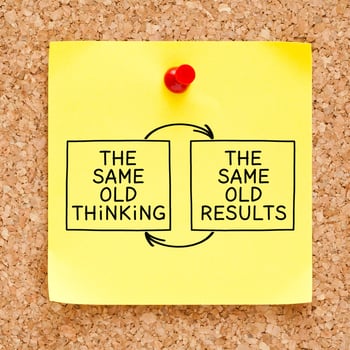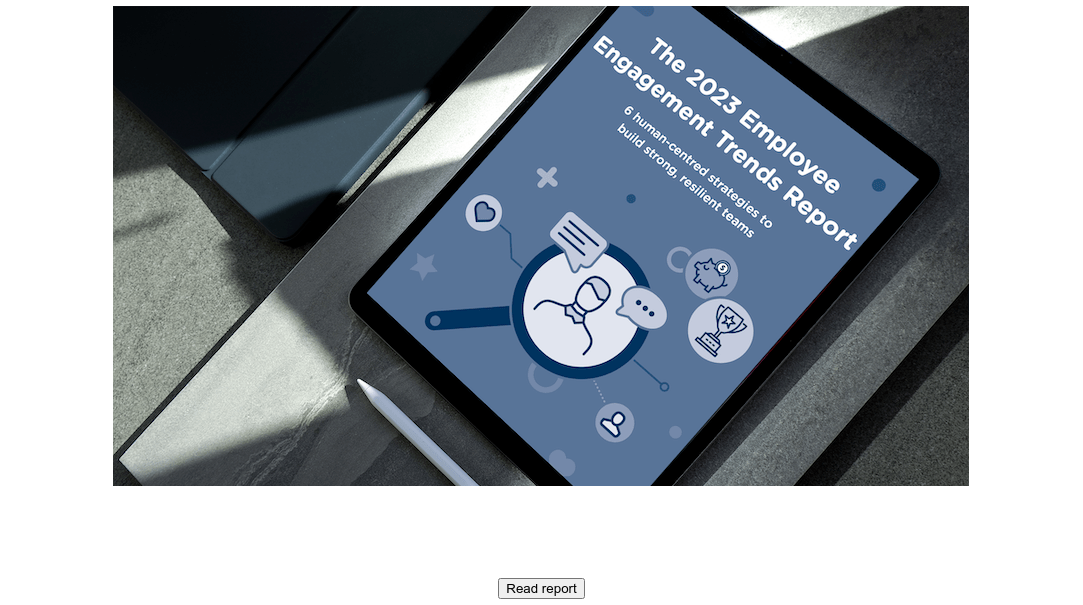So you’ve managed to get the right people on board, hit a high performance level and begun building a workplace culture in which your people can thrive.
The question is: how does your business stay at that level long-term?
It starts by viewing employee engagement as an ongoing journey, not a destination. Every employer needs to stay on their toes to prevent stagnation creeping into day-to-day operations, while keeping a constant watch for fresh ways to attract and retain the best talent.

Industry leaders understand there’s no room for complacency when it comes to staying in front of their competitors – and that it’s difficult to maintain standards without a continuous optimization mindset. But knowing exactly where and how to make a better workplace isn’t always so obvious.
With that in mind, let’s explore a few ways employers can uncover efficiencies, keep their people engaged and stay on the path of sustainable growth for years to come.
| 3 C's of staying a Top Place to Work |
| 1. Create a positive feedback loop |
| 2. Conduct internal audits |
| 3. Continually evolve staff reward and recognition |
Create a positive feedback loop
 For employees to truly go the extra mile and align themselves with business goals, they need to feel their voice is being heard. Reward Gateway’s latest Employee Engagement Trends Report found that 89% of global employees say feeling listened to by leadership is crucial to their wellbeing at work.
For employees to truly go the extra mile and align themselves with business goals, they need to feel their voice is being heard. Reward Gateway’s latest Employee Engagement Trends Report found that 89% of global employees say feeling listened to by leadership is crucial to their wellbeing at work.
Even if it’s unintentional, it’s easy for managers and senior leaders to skim over the thoughts and feelings of the people who keep their business running. A company might be able to survive withholding opportunities for staff to share feedback for a while – but, over time, this is bound to lead to a mismatch in expectations and lack of trust.
Establish a positive feedback loop in which employees can detail the elements of their job they are happy with, as well as those which could be improved.
For example, if you’ve rolled out any recent people-focused initiatives, then in addition to tracking engagement through a digital platform, you should also be asking for targeted, qualitative feedback during company-wide surveys, or staff one-to-ones.
This informs your direction for future initiatives and helps gauge a more accurate view of employee sentiment. The feedback must be open, honest and constructive, so it’s down to people managers ensure staff feel trusting enough to share their true opinions – without fear of reproach.
That kind of transparency is the hallmark of a great organization – and one that employees can trust.
Conduct internal audits
No matter the industry, it always pays for employers to take out the magnifying glass every now and again to pinpoint inefficiencies, gaps in processes or areas that need additional resources.
 Often, companies that still rely on outdated legacy processes and systems don’t realize the productivity gains they could achieve with a more efficient system. It’s easy to say “that’s just the way we’ve always done it” without taking time to evaluate options, and find ways to shape an even greater workplace experience for both managers and employees.
Often, companies that still rely on outdated legacy processes and systems don’t realize the productivity gains they could achieve with a more efficient system. It’s easy to say “that’s just the way we’ve always done it” without taking time to evaluate options, and find ways to shape an even greater workplace experience for both managers and employees.
Top businesses conduct a comprehensive audit at least once a year.
That said, it may be the case that certain areas of the organization would benefit from more frequent audits, particularly if red flags or problems with performance keep cropping up.
Internal audits dovetail nicely with the feedback loop above because they ensure that employers never miss quick wins and potential avenues for improvement.
Continually evolve staff reward and recognition
Workforce expectations are always changing, and the things that engage Gen X and Millennials aren’t the same things that will attract and retain Gen Z and future generations.
It's essential that reward and recognition programs continually develop to continually provide value and meet your people where they are. It doesn’t need to break the bank either – it’s often the more creative, thoughtful rewards that really strike a chord with employees, rather than a marginal pay raise at distant intervals.
 For example, if your business focuses predominantly on manager-to-staff recognitions, you might be able to unlock greater engagement by enabling more peer-to-peer recognition. An eCard system is a good way to do this, combining social and digital elements to make it easy for staff to shine a light on the great work done by their colleagues.
For example, if your business focuses predominantly on manager-to-staff recognitions, you might be able to unlock greater engagement by enabling more peer-to-peer recognition. An eCard system is a good way to do this, combining social and digital elements to make it easy for staff to shine a light on the great work done by their colleagues.
Or, if you feel your rewards program is beginning to stagnate, it might be worth looking at fresh options to link rewards to personal development, remote working benefits or other core parts of your workplace culture.
Making the Top Places to Work list is an achievement worth celebrating, without a doubt. But the work isn't over once you’ve landed your spot – it’s only just beginning.
Looking for more tips and guidance on how to make a better workplace for your employees? Subscribe to our blog and never miss an update!

 Kaitlin Howes
Kaitlin Howes


